|
As the weather begins to warm up and the sunshine brightens our days, other things can warm our heart as well. This is the time of year to think about special people and all that they have done for us. From caring for us to little acts of kindness, we have been blessed to have these people in our lives. Special Days For Special PeopleSome of the most popular special celebrations at this time of the year are Mother's Day, Father's Day, Teacher Appreciation Day/Week, and Volunteer Appreciation. Here are a few ideas and resources to help with these celebrations. Mother's Day/Father's DayAs family dynamics change, it makes it more difficult to focus on some celebrations, Mother's Day and Father's Day are two that have been traditionally celebrated over the years and time has been spent making gifts and cards at school for these special days. However, it is more complicated now and we need to take into consideration those who might find this a challenge and help them to feel included and comfortable participating. If a mother or father is not part of the picture, a special lady or special man in the person's life can be the focus instead. Mother's Day (Special Lady) There are many special women that can be acknowledged on this day. They may be mothers, grandmothers, aunts, step mothers, foster mothers, friends of the family, neighbors, or even teachers. These women are special for various different reasons, but they are important in our lives. If a child has more than one "mother figure" and wishes to celebrate these special ladies, it's important to give them that opportunity. Here are some resources that may be of interest for Mother's Day. Mother's Day Certificates Mother's Day Booklets And Cards Special Mother's Day Coupons And Acrostic Special Day Coupons, Templates And Acrostics (for mothers, fathers, and generic) Father's Day (Special Man) As with mothers, kids may want to celebrate different special men in their lives. They may be fathers, grandfathers, uncles, step fathers, foster fathers, friends of the family, neighbors, or even teachers. These men provide different roles in their lives, but they are important to the child. Opportunities need to be provided to acknowledge them as well. Here are some resources that may be of interest for Father's Day. Father's Day Cards For Dads And Other Special Men Father's Day Cards And Posters Special Day Coupons, Templates And Acrostics (for mothers, fathers, and generic) Teacher Appreciation Day/WeekTeachers do so much for our children. It is only fitting that they be celebrated. They have had a tough time during these last few years dealing with the pandemic and the residual effects of varied learning experiences as a result. They continue to show up and give their all every day, even when they are struggling. Teacher appreciation day or week, depending on where you are, is just a small acknowledgement of their impact on our children's lives. Every little thank you token of appreciation is special to them. Don't forget to let them know how much you appreciate them. Support staff and educational assistants are also important and should be included in these celebrations. There are so many things they do to help teachers and support learning. Volunteer AppreciationMany schools have volunteer appreciation days or teas to thank volunteers for all they do for the school. This could be the parent groups, classroom helpers, individual parents, or people from the community. All of these people help the programs and school run better. Helpers are always needed, and we want to make sure they are not taken for granted. Every school or district is different, but here is an example from what we have done at our school. The classes would meet in the gymnasium and the volunteers would be invited to enter after every class was there. The students would give them a standing ovation as they entered the gym. This would be followed by some entertainment and then a strawberry tea. The students would be in class or outside playing while the tea was happening. The senior students would serve the volunteers. Place mats and thank you cards were made for the tables. Plants were also provided to decorate and then take home. Here are some place mats and thank you cards that I created for use at our tea. Helping Hands Thank You Notes Whatever the special occasion, it's a chance to say thank you and let people know that you appreciate them. So many times people feel taken for granted and this little acknowledgement can warm their hearts and help them to keep going. Thank you to all the special people in my life. You have given me so much and I truly am blessed to have you as part of my life. I may not say it often enough, but I do appreciate you. Related PostsWhen babies take their first steps, they wobble and they often fall. With help and practice they begin to take steps by themselves. Before long they are running and they are able to hop, skip, and leap over things. Baby steps lead to bigger steps. That is true in all areas of life including Math. The basic facts are the baby steps that lead to more complex and abstract skills. Once the basic steps are mastered, it is time to move on to more complex problems using double and triple digit numbers. Complex problems can be daunting, but the good news is that there are many strategies that can help. Looking for tensThis strategy involves breaking down the big numbers into smaller, more manageable ones. We search for numbers that can easily be combined or subtracted in groups of ten. Finding pairs of numbers that add up to ten make calculations easier. It's like a treasure hunt where we search for numbers that can make adding and subtracting easier and use that knowledge to solve more challenging problems. Using A Number LineNumber lines are a great tool for addition and subtraction. They provide a visual representation to help with seeing how numbers relate to each other. Kids can see the steps needed to get from one number to another and it helps them to understand more complicated calculations as they hop to the answers. Regrouping Using Base Ten Blocks And MoneyRegrouping is another strategy used when working with larger numbers. Using base ten blocks as you practice this skill will help with visualizing why we regroup and what it really means. Regrouping is really just trading ones for tens or tens for ones which helps to make calculations easier. Once the concept of regrouping is understood there are several other ways to help with remembering how it works. My favorite is banking. I teach my kids to take 10 pennies and trade them for a dime when adding. If they don't have enough pennies when doing subtracting, I tell them to go to the bank and trade a dime in for 10 pennies. As they move on to 3 digit addition and subtraction I tell them that 10 dimes makes one dollar so they can trade dimes for dollars or dollars for dimes when doing their calculations. Working With Expanded Notation And Combining PartsWe also have expanding notation which allows us to break down numbers into their individual digits. This helps us to see the value of the individual digits and it also helps us to add similar values. We can also use expanding notation for figuring out subtraction. See the image below for an explanation and example. Standard Algorithm For AdditionMany of us grew up with an algorithm for addition. This is still valid today, but it is important to understand how it works and what we are actually doing when we use it. Most often we stack the numbers one under the other and make sure that the digits line up. The ones would be added and then the tens would be added. For regrouping, you would need to carry the extra tens and add them to the tens column. See the images below for an example. Standard Algorithm For SubtractionThe standard algorithm for subtraction works the same way, but when regrouping we need to take from the tens column and add it to the ones column when we don't have enough ones to do the subtraction. See the images below for some examples. Anchor Charts For Addition And SubtractionWhen learning the basic facts for addition and subtraction, many strategies are taught and practiced. Each person will have some strategies that work well for them and they can apply these strategies to more complex questions. Get a free copy of these anchor charts by signing up for my newsletter. If you are interested in some practice worksheets to go along with the different strategies, check them out here. I hope you find these tips helpful as you continue to guide your students through the complexities of math. Related PostsLife is a series of give and take and in math class, this is also true. We give and take when we work with addition and subtraction and it is important that we learn how to do this well in order to be able to apply skills to real life situations. Last week I focused on addition strategies for basic facts. Today I would like to look at subtraction strategies. You may notice there are many similarities between the two. As with addition, I recommend starting with manipulatives such as base ten blocks, number lines, ten frames. These visuals will help the strategies make sense for many children. Subtraction StrategiesDeciding what strategy to use will be different for each person, but in order to be able to choose, it is important to be introduced to a variety of strategies and have opportunities to practice them. Here are 6 strategies you might find helpful. Zero FactsJust like in addition, zero is a special number for subtraction. Zero can be subtracted from a number and leave the same number or it can be the answer when a number is subtracted from the same number. When kids see a zero they should be able to automatically recognize this fact. It will come in very handy when they start to use larger numbers. Counting BackIf you have a ruler or a number line, you can use a counting back strategy to figure out the subtraction question for basic facts. It is possible to do it for larger numbers as well, but it is not a very efficient strategy for subtracting double digit numbers. Place your finger on the first number and count back the number of spaces of the second number to get your answer. If you use a pencil and paper with a number line, you can actually draw the steps backward. This will help to avoid getting lost or miscounting. Related FactsRelated facts help when you know one fact and need to figure out the other fact. When you look at the question, think about the related fact to figure out the answer. Sometimes it is easier for us to figure out the related fact and then solve the question. It's just the way our brain works sometimes. DoublesIf you are taking away an amount that doubles to equal the first number of the subtraction question, then the answer will be the same as the amount taken away. This strategy depends on how well one knows the doubles facts. Looking For TensWith basic facts, tens can be a useful strategy. For instance, if you know the different combinations of numbers that equal ten, you can use fact family triangles or number bonds to figure out the different subtraction questions. If you are subtracting using a ten frame, colored objects or circles help you to see how many are remaining. See the image below as an example. For larger numbers up to 20, you could use a couple of ten frames. Change To AdditionSometimes it's easier to think of the question in addition rather than subtraction. You can also apply addition strategies to this. For instance, in the example below you could use doubles plus one to figure it out, or you could count on to get the answer. Once the basic subtraction facts are well practiced, moving on to double digit subtraction and more complex questions requiring regrouping will make more sense. Next time I will talk more about double digit addition and subtraction and strategies that will help these make sense. Related PostsDo you know your basic facts? This may seem like a silly question, but there are many people who struggle with the basics and this is why math is so difficult for them. When I worked with intermediate students that were struggling, I discovered that they were missing the building blocks that would help them with more complex situations. They didn't have a solid foundation and they struggled to find strategies to help. Math is all around us and it can be frustrating if we don't have a good understanding of how to use it well. As a primary teacher, I know just how important it is to start building strong foundations in math. Learning basic facts is like laying bricks for a sturdy house - without them, the structure can easily crumble. Fortunately, it is never too late to master the basics and improve math skills. There are many different strategies and approaches available to accomplish this. I would like to focus on a few addition strategies today. Basic Facts Addition StrategiesMoving from concrete to abstract is important, but first it is necessary to make sure that the foundation of basic facts is solid. Using manipulatives and simple strategies help to make sense of the different concepts, so don't be too quick to remove them as you try out the strategies shown here today. Adding zeroAdding zero is a concept that can be demonstrated easily with concrete examples. When nothing is added to something, there is no change. As you can see in the example below, it doesn't matter if the zero comes at the beginning of the number sentence or the number of objects comes at the beginning of the sentence, the answer still stays the same. Turn it aroundIt's funny how our brains work sometimes. We can figure things out faster when we see a question shown in a certain way. Both of the number sentences below have the same numbers in them, but for some reason it may be easier to recognize the answer faster looking at one of the sentences. That is the beauty of understanding that the cummutative principle of addition means we can turn the question around and still get the correct answer. We may not use the formal term when we teach this strategy, but the visual makes it clear. Counting onCounting on is a strategy that is well used for addition. Think of the number of times you may have noticed a child using fingers to count on when figuring out how much more is added. Maybe you have used your fingers to figure things out as well. Using a number line is another great visual for counting on. Place your pencil (or finger) on the first number in the sentence and count on the number of spaces of the second number to get your answer to the question. Making tensMaking tens is a great way to help with figuring out addition questions. Start with looking at different ways to make ten using dice, fact families, number bonds, and ten frames. Making Tens And MoreAfter becoming comfortable with tens you can add in some of the larger numbers to figure out other basic facts. For example: If you know that 8 + 2 = !0, then for 8 + 9 , you can take 2 from the 9 to make 10 and that leaves 7, so 10 + 7 = 17 See the image below for a visual representation. DoublesLearning doubles can be a very helpful strategy. Here are some pictures that can be used as reminders for the doubles for each of the numbers from 1 to 9. There can be other images substituted for these depending on what may work for your students. It will take practice to remember these hints. An anchor chart might also help. eyes for 1 + 1 : easy to remember because we have 2 eyes domino with 2 + 2 : counting by twos also works using dice with 3 + 3 : shows the two rows of 3 dots spider legs for 4 +4 : spiders have 8 legs hands for 5+ 5 : counting by fives works as well carton of eggs for 6 + 6: a dozen is 12 calendar for 7 + 7 : each week has 7 days 2 octopus for 8 + 8 : each one has 8 legs 18 wheeler for 9 + 9 : each side has 9 wheels Near doublesSometimes it helps to use doubles and add one when you need to add two numbers that are close together. For a simple example, check out the image below. Some facts are harder to remember than others. This strategy can work well for some of these situations. For instance, many struggle with 8 + 9. If they double the 8 and add one, it can help. Here is an addition mandala that is fun to do and helps with practicing basic facts in addition. It comes in both English and French. Get a free copy by signing up for my newsletter. There are other strategies that can be used as well, but I wanted to focus on a few tried and true strategies that my students have used. Once the basic facts are solid, moving on to more complex addition will be easier. I will share ideas about more complex addition in a future post. For now, I hope that these ideas and strategies help your students to build a strong foundation in math. Related PostsDo your students struggle to make sense out of math? Do they grumble and get frustrated whenever it is time for math? Maybe they just need to have more practice manipulating things and visualizing concepts. Using concrete materials and hands on activities is the best way, in my opinion, to help kids make sense out of the math concepts they are being taught. However, at some point they need to be able to move from the concrete to the abstract. Here are a few ideas that combine both as they move towards that transition. Basic FactsWhen we talk about basic facts, we usually mean addition and subtraction facts of single digit numbers. These are the foundation for all other addition and subtraction problems and they are also the base for multiplication and division. If kids are to make sense and be successful with more complex situations, they need to have a good handle on their basic facts. Start out by using objects and combining them for addition and removing some for subtraction. As these steps are practiced, try using words like adding and plus or taking away and minus so that when the number sentences are used, they will be familiar with the language. When the number sentences are added, make sure to have an image of the objects there as well so the correlation between the concrete and abstract is visible. Fact Families and Number BondsFact family triangles help kids to see the relationship between addition and subtraction and the separate elements. Number bonds are another way of representing this. Try using objects and breaking them down into the different sets so that they can actually count and check to see that the addition and subtraction sentences work. Here are some resources that I created to practice using fact family triangles and number bonds. Click on the images to check them out. Representing Numbers And Place ValueOnce kids are able to recognize numbers up to ten, it is time to start looking more closely at numbers with two or more digits. They may be able to count past ten and even up to one hundred, but do they really understand what the digits in the numbers mean when they look at them? In most cases, they think of a number such as 324 to be a 3, a 2, and a 4. They hear three hundred twenty-four when they say the number out loud, but they don't really understand that it is 300 plus 20 plus 4. There are several ways to help them figure this out. Here are a couple of ways that I like to use. Base Ten BlocksBase ten blocks allow kids to manipulate objects to show different numbers. They can touch the hundreds, tens, and ones as they count them and move them around. Once they can accurately create numbers using the blocks, they can draw them using large squares for hundreds, rectangles for tens, and small squares for ones. Expanded NotationExpanded notation stretches the number out so that each of the digits is represented with its value. For example: 523 is really 500+20+3. Start out using the base ten blocks to show what it looks like before moving to the abstract addition sentence. Practice saying different numbers and then representing them with the base ten blocks. Once they can show the number correctly each time, add in the written component. Draw a picture of the number using base ten symbols and write the expanded addition sentence under it. Once they get comfortable with recognizing the standard notation and representing it with base ten blocks and expanded notation, matching the 3 different formats can be added. Here is a resource I created that does that. It also has a bingo component. Click on the images to see more. Check out the video below for an explanation about how to use this resource to help kids understand ways to represent numbers. Another way to show numbers with their actual values is to make card stock strips with 100,200,300,400,500,600,700,800,900 on them, and shorter ones with 10,20,30,40,50,60,70,80,90 on them, and shorter ones with 1,2,3,4,5,6,7,8,9 on them. Hand out the strips to the kids and have them show the actual numbers by standing together with the correctly numbered strips. For example: 362 is the number. The kids with 300, 60, and 2 would stand together to show that they make the number 362. They could also overlap their strips to show the standard notation number. if you would like some worksheets to practice representing numbers in a variety of ways, check out my place value category in my store. There you will find sets for different holidays and seasons. I have also created a sample set that is free for signing up for my newsletter.. These are only a few ideas for using hands on activities to help make sense of math concepts. Moving to the abstract will be an easy transition for some, but will be difficult for others. If necessary, add in concrete activities along the way to help kids see the relationships and apply concepts to other activities. Next time I will share some addition tips and strategies. Related Posts |
About Me Charlene Sequeira
I am a wife, mother of 4, grandmother of 9, and a retired primary and music teacher. I love working with kids and continue to volunteer at school and teach ukulele. Categories
All
|












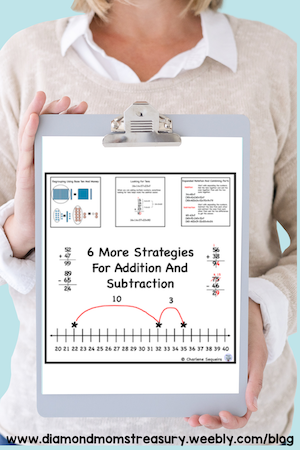
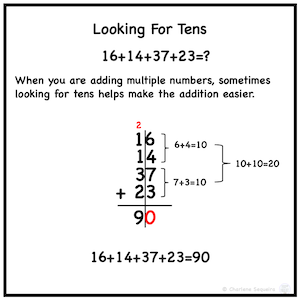



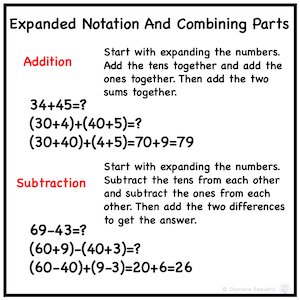






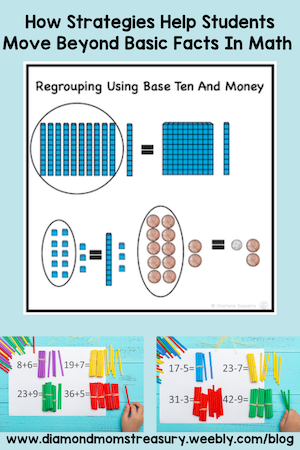














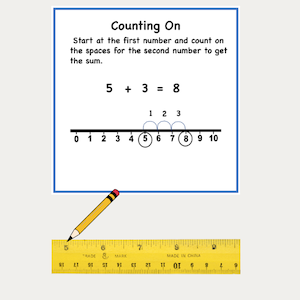





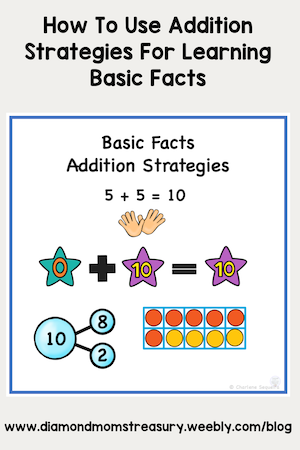
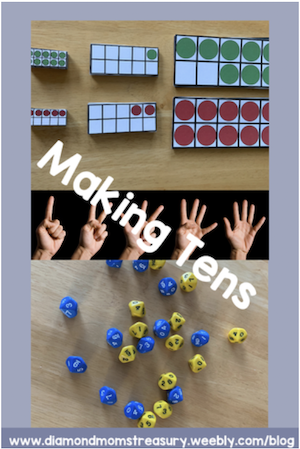











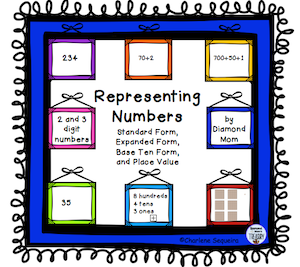

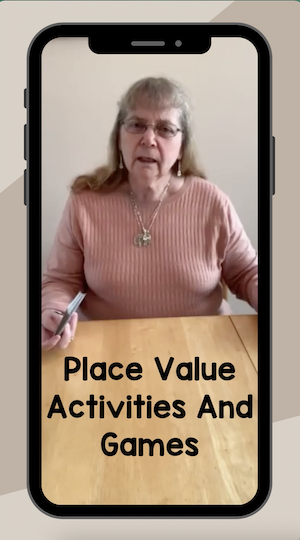
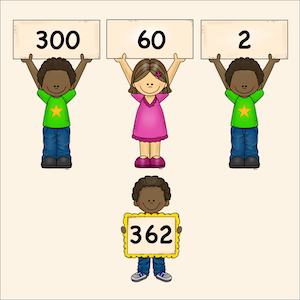






 RSS Feed
RSS Feed